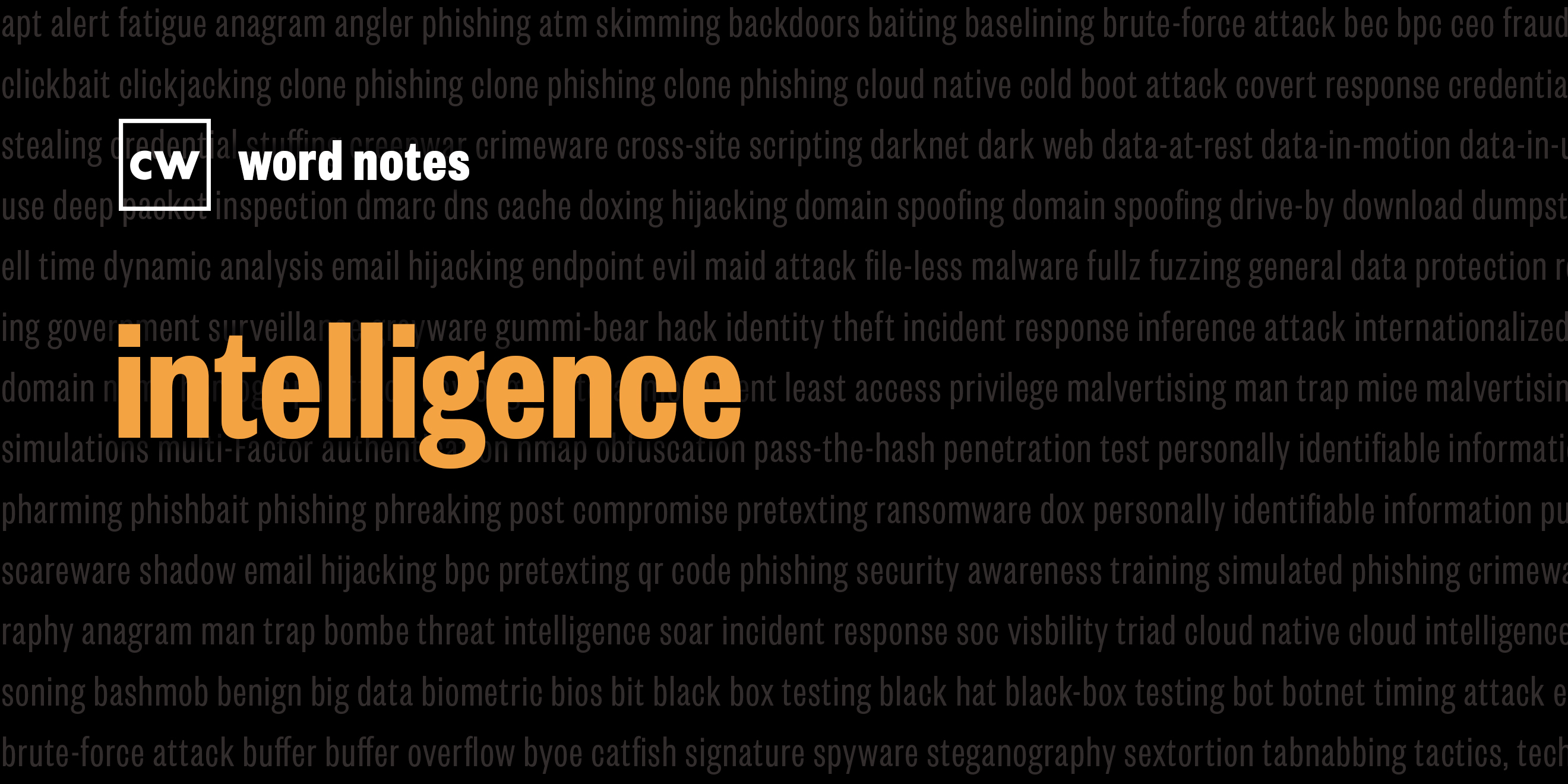
intelligence (noun)
Rick Howard: The word is: intelligence.
Rick Howard: Spelled: I for Inga Bergstrom, N for Naomi, T for Tiffany Case, E for Ernst Blofeld (my favorite), L for LaPorte, L for Ling, I for Inga Bergstrom again (because I couldn't find another character name that started with the letter I), G for Goldfinger, E for Elektra King, N for Nancy, C for Chew Mee, and E for Emilio Largo.
Rick Howard: Definition: The process of turning raw information into intelligence products that leaders use to make decisions with.
Rick Howard: Example sentence: Ancient soothsayers are said to be the original intelligence producers.
Rick Howard: Origin and context: According to ProfessorVejas Gabriel Liulevicius of the University of Tennessee, "Our earliest evidence of intelligence work comes from the clay tablets of Mesopotamia, and we know from the Bible that spies were used not only for political rivals, but also by religious ones in ancient Israel."
Rick Howard: Today, there are thousands of government and private agencies from data brokers to general public service companies involved in intelligence production. And there are many types of data collection. Here are four of the most common types: human intelligence, or HUMINT, information collected by actual people on the ground. Think James Bond.
Rick Howard: Signals intelligence, or SIGINT, information collected from communication systems like satellite radio, and other electronic emitters, like radars and jammers.
Rick Howard: Imagery intelligence, or IMINT, information collected from satellite imagery. Think Google maps.
Rick Howard: And finally open source intelligence, or OSINT, data collected from public repositories, like blogs, TV, and Wikipedia.
Rick Howard: Nerd Reference: In the original Star Wars movie from 1977, starring Carrie Fisher, Mark Hamill and Harrison Ford, General Dodonna, played by Alex McCrindle, provides an intelligence brief to the rebel fighter pilots about the Death Star. Notice that he not only provides the information about the weakness of the Death Star platform, the data collection part, but he also tells the pilots how to blow it up, the data analysis part.
General Dodonna: The battle station is heavily shielded and carries a firepower greater than half of Star Fleet. Its defenses are designed around a direct large scale assault. A small one man fighter should be able to penetrate the outer defense. An analysis of the plans provided by Princess Leia has demonstrated a weakness in the battle station. The target area is only two meters wide. It's a small thermal exhaust port right below the main port. The shaft leads directly to the reactor system. A precise hit will start a chain reaction, which should destroy the station.
Rick Howard: The executive producer of Word Notes is Peter Kilpe. And is written by Nyla Gennaoui. And edited by John Petrik and me, Rick Howard. The mix, sound design, and original music have all been crafted by the ridiculously talented Elliott Peltzman. Thanks for listening.

